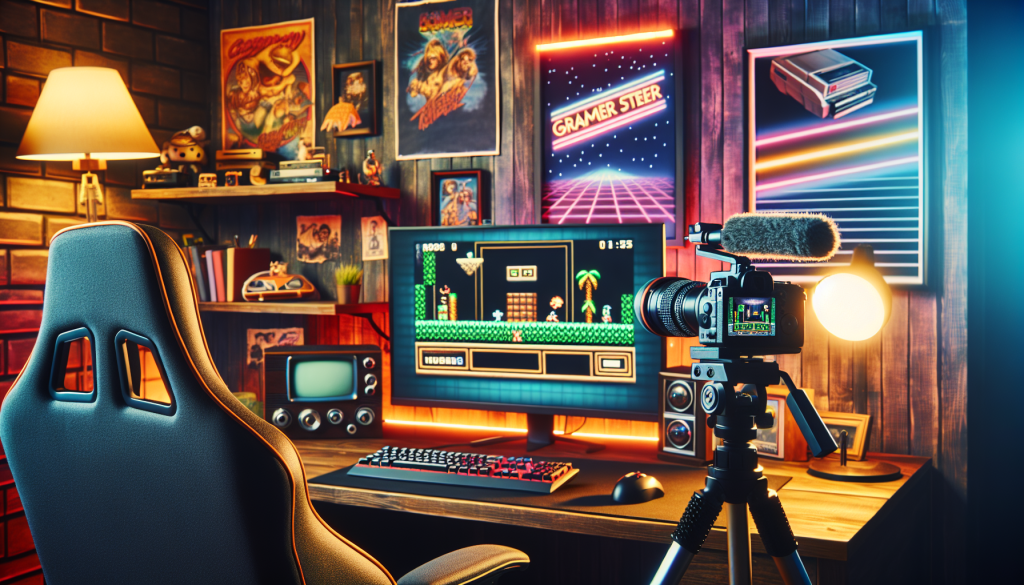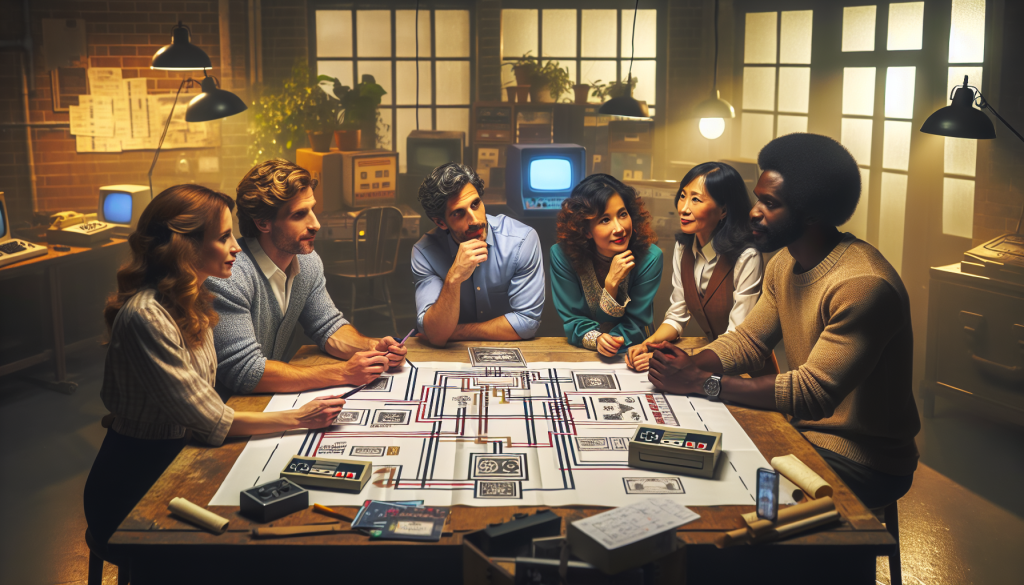Hey there, fellow gamers! Let’s take a trip down memory lane and dive into the world of classic game mechanics. Have you ever wondered why these retro games continue to captivate us, even in this era of advanced graphics and complex gameplay? Well, join me as we explore the appeal of classic game mechanics and why they still hold a special place in our hearts.
1. Understanding the Appeal of Classic Game Mechanics
There’s something undeniably charming about the straightforward and addictive nature of classic game mechanics. Think about those timeless games like Super Mario Bros., Pac-Man, or Tetris. They all have one thing in common – simple, yet incredibly engaging gameplay.
These games were designed to be easy to pick up and play, allowing players of all ages and skill levels to enjoy them. Whether you were a seasoned gamer or a beginner, you could jump right in and instantly have fun. That accessibility is a major part of the appeal.
Moreover, classic game mechanics often prioritize gameplay over flashy graphics or complex narratives. Back in the day, developers had limited resources, so they had to focus on creating gameplay that was addictive and kept players coming back for more. It’s this emphasis on gameplay that still draws us in today.
Think about the satisfaction of jumping over obstacles, collecting power-ups, or solving puzzles without the need for a lengthy tutorial. These mechanics provide a sense of accomplishment and reward that keeps us hooked. In a world where everything seems to be getting more complicated, the simplicity of retro games is a breath of fresh air.
But it’s not just about simplicity. Classic game mechanics also offer a level of challenge that keeps us engaged. Remember the frustration of trying to beat that one difficult level over and over again? Despite the occasional rage quit, we kept coming back because of the thrill that came with conquering those challenges. It’s all about that sweet taste of victory!
So, why are classic game mechanics still relevant in today’s gaming landscape? Well, they offer a sense of nostalgia, reminding us of simpler times when gaming was all about having fun. But they also provide a refreshing break from the overwhelming complexity of modern games. Sometimes, all we need is a straightforward and enjoyable gaming experience.
That’s not to say that modern games don’t have their own appeal. They offer stunning visuals, immersive storytelling, and innovative gameplay mechanics. But there’s something special about going back to the roots of gaming and experiencing the joy of those classic mechanics that paved the way for what we have today.
So, whether you’re a seasoned gamer or just getting into gaming, don’t forget to appreciate the simplicity and timeless appeal of classic game mechanics. They may not have the most cutting-edge graphics or the most intricate storylines, but they have the power to capture our hearts and provide endless hours of fun. After all, isn’t that what gaming is all about?
Modernizing Retro Gameplay: Graphics and Controls
Ah, the nostalgia of playing those classic retro games. The pixelated graphics, the simple yet challenging gameplay, and the iconic sound effects. There’s something truly captivating about revisiting these timeless classics. But as much as we love the charm of retro games, it’s only natural to wonder how they would fare in today’s gaming landscape. How can we modernize retro gameplay without losing its essence?
One of the key aspects of modernizing retro gameplay is updating the graphics. While the pixelated art style holds a special place in our hearts, there’s no denying that today’s gamers have come to expect more visually stunning experiences. That’s where the magic of modern technology comes into play. By enhancing the graphics while still preserving the retro aesthetic, developers can strike a balance between the old and the new.
Take the example of the critically acclaimed game “Stardew Valley.” Inspired by the classic Harvest Moon series, this indie gem managed to capture the essence of retro gameplay while incorporating beautiful hand-drawn visuals. The result? A game that feels both nostalgic and visually impressive, appealing to a wide range of players.
Of course, graphics alone aren’t enough to modernize retro gameplay. The controls also play a crucial role in creating an engaging experience. While the simplicity of retro controls has its charm, it’s important to make them more intuitive and responsive. This means taking advantage of the advancements in hardware and software to enhance the player’s control over the game.
For instance, many retro-inspired platforming games now offer improved jump mechanics. Instead of relying solely on precise timing, players can enjoy a more fluid and responsive jump, making the gameplay feel smoother and more enjoyable. This doesn’t detract from the retro feel; rather, it enhances the overall experience by eliminating frustrations that might have been present in the original games.
But modernizing retro gameplay isn’t just about updating the visuals and controls. It’s also about adding new features and challenges to keep players engaged. While the simplicity of retro games was part of their appeal, it’s important to strike a balance between maintaining the core mechanics and introducing fresh elements.
One effective way to do this is by incorporating new levels, power-ups, or even multiplayer modes. These additions can bring a fresh twist to the gameplay without overshadowing the retro charm. By carefully integrating new features that complement the original mechanics, developers can create an experience that appeals to both nostalgic gamers and newcomers alike.
At the end of the day, modernizing retro gameplay is all about striking a balance between nostalgia and innovation. It’s about taking what made those classic games so special and bringing them into the modern age. By updating the graphics and controls, enhancing the mechanics with new features and challenges, developers can create games that capture the hearts of both retro enthusiasts and contemporary gamers.
Enhancing Retro Mechanics with New Features and Challenges
Ah, the nostalgia of classic game mechanics. There’s something undeniably charming about the simplicity and challenge of retro gameplay. But as much as we may love those old-school games, sometimes we crave a little something extra. That’s where enhancing retro mechanics with new features and challenges comes in. When it comes to enhancing retro mechanics, one of the first things that often comes to mind is graphics. While the pixelated art style of classic games has its own appeal, modernizing the visuals can give the game a fresh and updated feel. By incorporating more vibrant colors, smoother animations, and higher resolutions, developers can create a visually stunning experience that still pays homage to the retro aesthetic. But graphics are just the tip of the iceberg. Controls play a crucial role in enhancing retro mechanics as well. While classic games often had simple and straightforward controls, modernizing them can improve the overall gameplay experience. Intuitive and responsive controls can make a game feel more immersive and enjoyable, allowing players to fully engage with the world and mechanics. Take, for example, the classic platformer genre. In retro games, jumping was often a simple affair. But by introducing mechanics like double jumps, wall jumps, or even the ability to control the character’s mid-air movement, developers can add a new layer of complexity and challenge to the gameplay. These new features not only enhance the retro mechanics but also provide players with fresh and exciting gameplay opportunities. Another way to enhance retro mechanics is by introducing new challenges. While classic games were known for their difficulty, modern game design has evolved to embrace a wider range of player skill levels. By introducing multiple difficulty settings or incorporating optional challenges, developers can cater to both new and experienced players. This not only makes the game more accessible but also adds replay value, as players can strive to conquer harder challenges or achieve better scores. Additionally, adding new features and challenges can also help to prevent the gameplay from becoming stale. As much as we love classic games, playing the same mechanics over and over can eventually lose its appeal. By introducing new gameplay elements, such as power-ups, secret levels, or even cooperative multiplayer modes, developers can inject fresh excitement into the retro mechanics. This keeps players engaged and eager to explore what the game has to offer. Now, while it’s important to enhance retro mechanics with new features and challenges, it’s equally important to find the right balance between nostalgia and innovation. After all, the appeal of retro gameplay lies in its simplicity and timeless charm. It’s crucial not to lose sight of what made those classic games so beloved in the first place. In conclusion, enhancing retro mechanics with new features and challenges is a delicate art. By modernizing graphics and controls, introducing new gameplay elements, and striking the right balance between nostalgia and innovation, developers can create a gaming experience that appeals to both old and new players. So, whether you’re a fan of classic games or a newcomer to the retro scene, get ready to embark on a nostalgic yet exciting gaming journey.4. Balancing Nostalgia and Innovation for Contemporary Gamers
When it comes to reviving classic game mechanics for modern audiences, there is a delicate balance to strike. On one hand, gamers are drawn to the nostalgia of playing games that remind them of their childhood. On the other hand, they also crave innovation and fresh experiences. So, how can game developers cater to both these desires?
First and foremost, it’s important to understand that nostalgia alone isn’t enough to sustain a game’s popularity in today’s competitive market. While nostalgia can initially attract players, it’s the engaging gameplay and innovative features that will keep them coming back for more. Therefore, when modernizing retro mechanics, it’s crucial to focus on enhancing the overall gaming experience.
One way to strike the right balance is by updating the graphics and controls while staying true to the essence of the original game. Technology has come a long way since the days of 8-bit graphics and clunky controls, and contemporary gamers expect a certain level of visual appeal and smooth gameplay. However, it’s important to remember that the original charm of retro games lies in their simplicity. So, while improving the graphics, it’s crucial to retain the nostalgic feel that makes these games so beloved.
Additionally, enhancing retro mechanics with new features and challenges can help bridge the gap between nostalgia and innovation. For example, introducing new power-ups or levels, or incorporating multiplayer modes can breathe new life into classic games. This not only adds excitement for existing fans but also attracts new players who are looking for a fresh and engaging gaming experience.
However, it’s important to tread carefully when introducing new elements. While innovation is key, it’s essential to maintain the core gameplay mechanics that made the original game so enjoyable. Straying too far from the original concept can alienate the fanbase and lead to disappointment. Therefore, game developers should carefully consider how new features and challenges can enhance the gameplay without diluting the essence of the retro experience.
Another crucial aspect of balancing nostalgia and innovation is understanding the target audience. Different generations of gamers have different expectations and preferences. For older gamers who grew up playing retro games, a faithful recreation with improved graphics and controls might be the ideal choice. On the other hand, younger gamers who have not experienced the classics might prefer a modernized version with additional features and challenges.
Ultimately, the key to striking the right balance lies in thoughtful game design and development. By paying attention to player feedback, conducting market research, and taking cues from successful retro-inspired games, developers can create experiences that resonate with both nostalgic fans and modern gamers.
So, whether you’re a die-hard fan of retro games or a newcomer to the gaming world, rest assured that there are developers out there who understand the importance of balancing nostalgia and innovation. So, go ahead and indulge in the best of both worlds!












